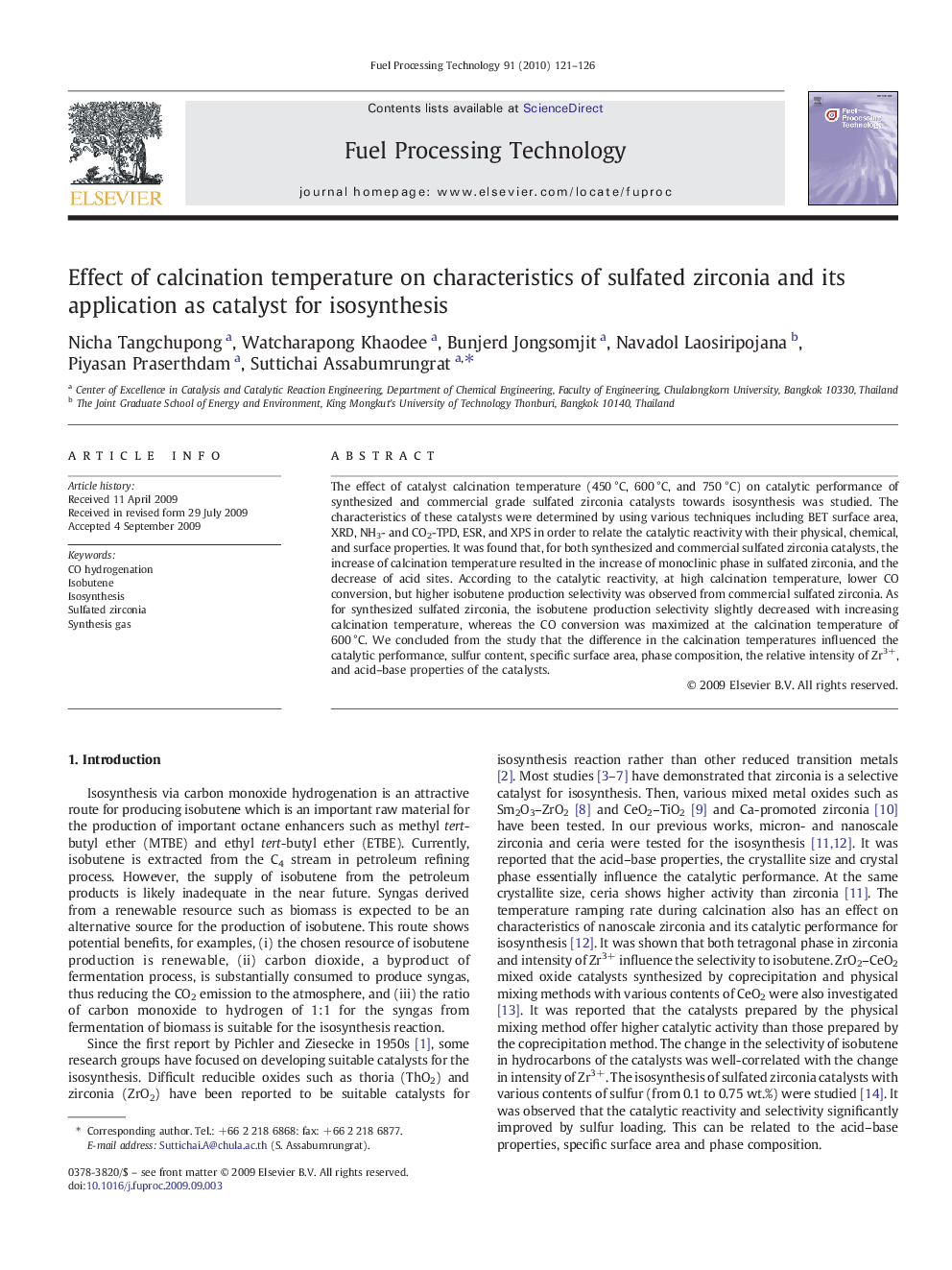| Article ID | Journal | Published Year | Pages | File Type |
|---|---|---|---|---|
| 211208 | Fuel Processing Technology | 2010 | 6 Pages |
The effect of catalyst calcination temperature (450 °C, 600 °C, and 750 °C) on catalytic performance of synthesized and commercial grade sulfated zirconia catalysts towards isosynthesis was studied. The characteristics of these catalysts were determined by using various techniques including BET surface area, XRD, NH3- and CO2-TPD, ESR, and XPS in order to relate the catalytic reactivity with their physical, chemical, and surface properties. It was found that, for both synthesized and commercial sulfated zirconia catalysts, the increase of calcination temperature resulted in the increase of monoclinic phase in sulfated zirconia, and the decrease of acid sites. According to the catalytic reactivity, at high calcination temperature, lower CO conversion, but higher isobutene production selectivity was observed from commercial sulfated zirconia. As for synthesized sulfated zirconia, the isobutene production selectivity slightly decreased with increasing calcination temperature, whereas the CO conversion was maximized at the calcination temperature of 600 °C. We concluded from the study that the difference in the calcination temperatures influenced the catalytic performance, sulfur content, specific surface area, phase composition, the relative intensity of Zr3+, and acid–base properties of the catalysts.
